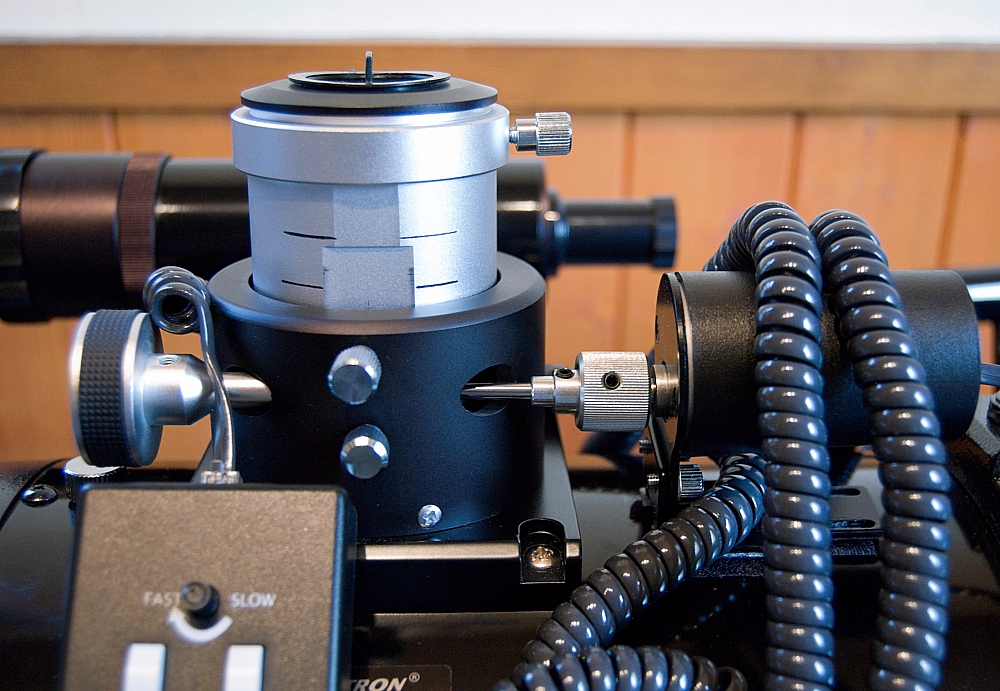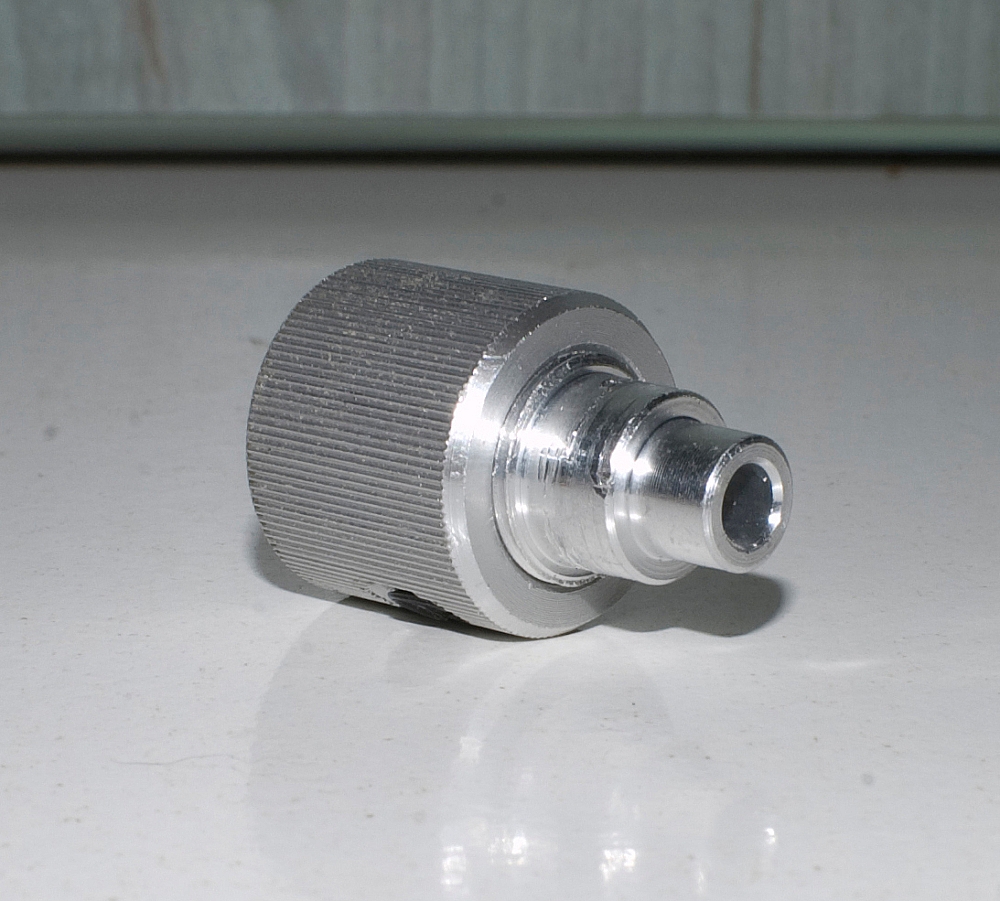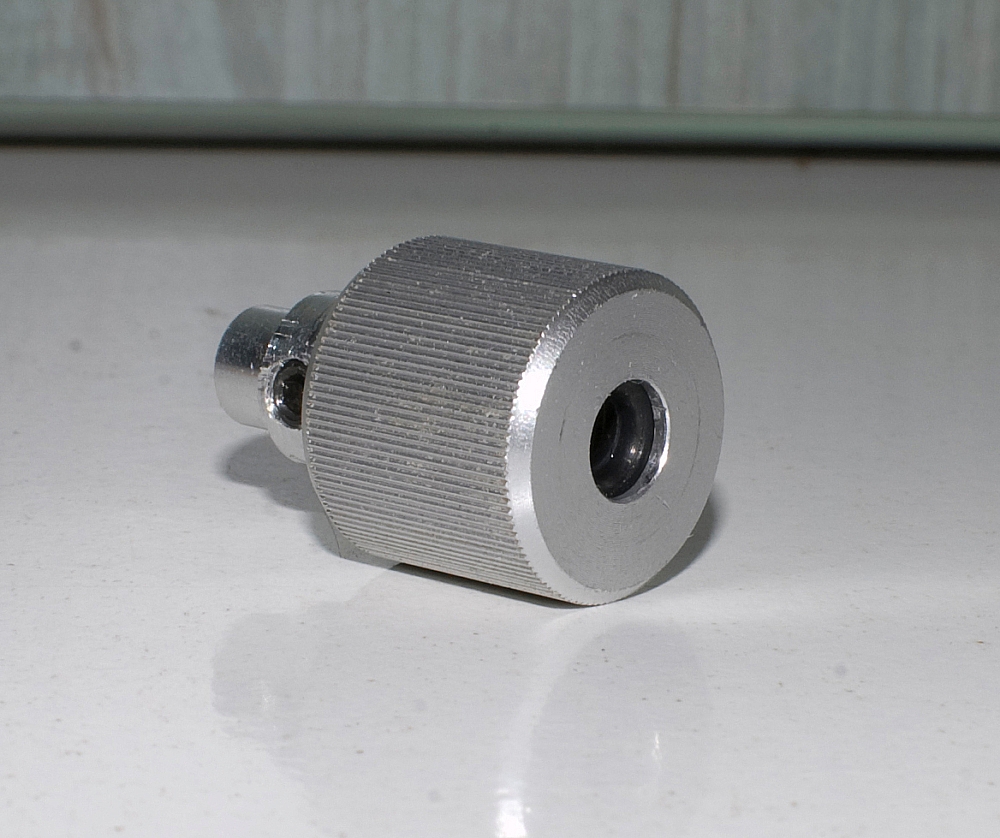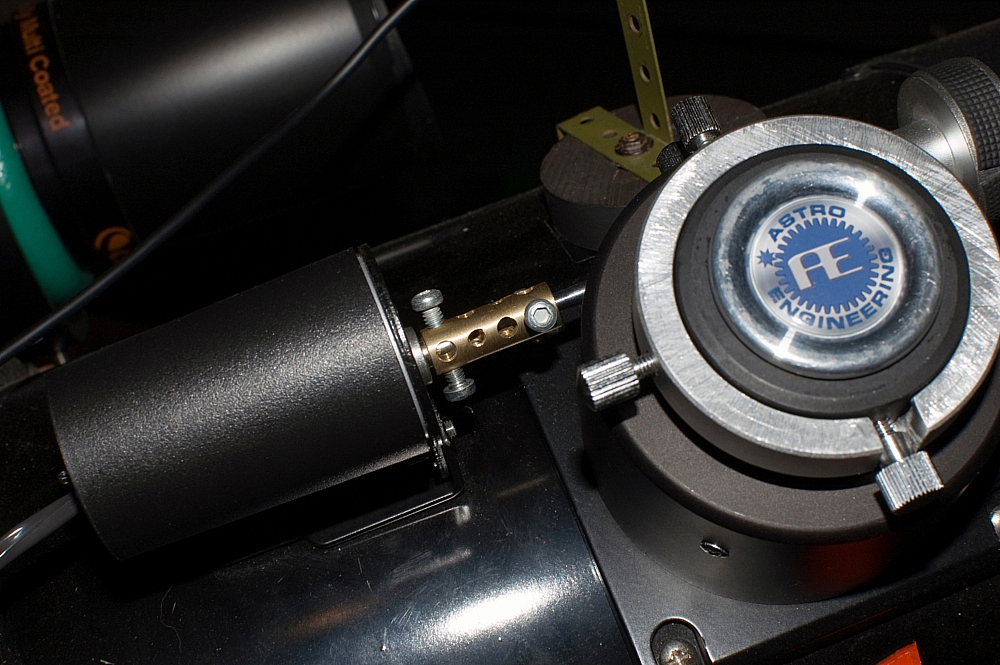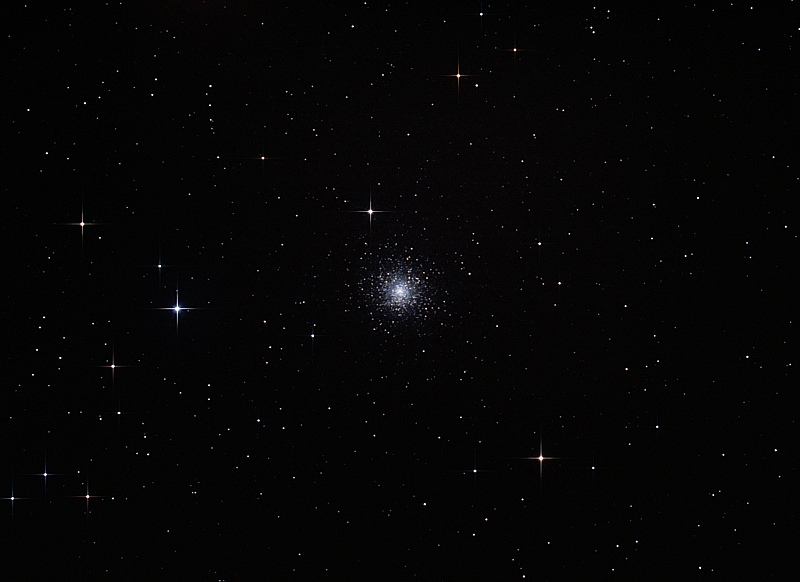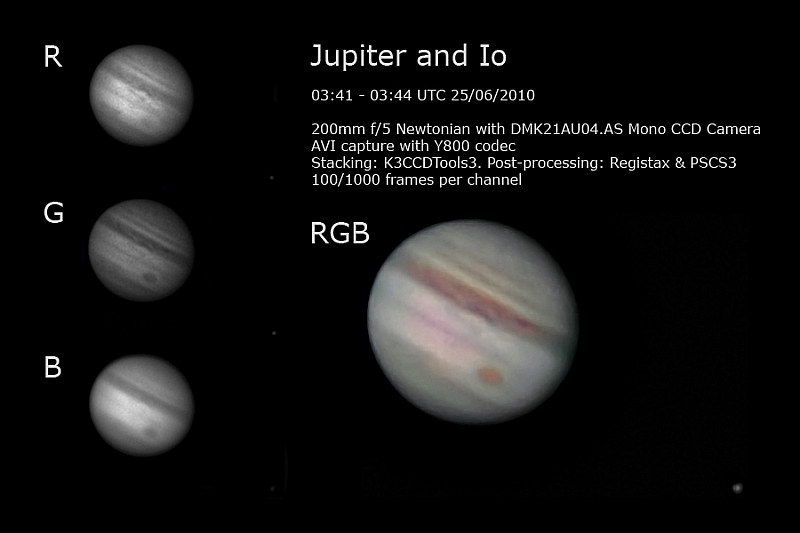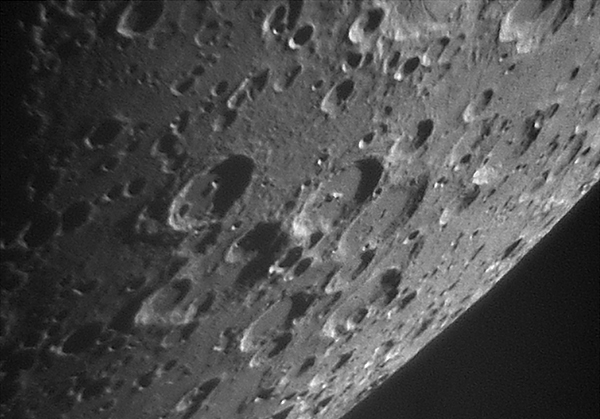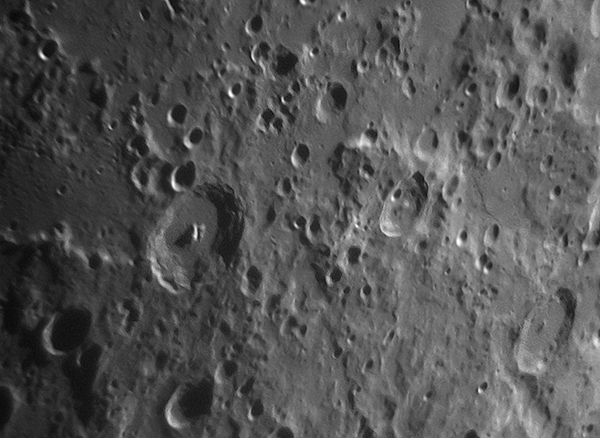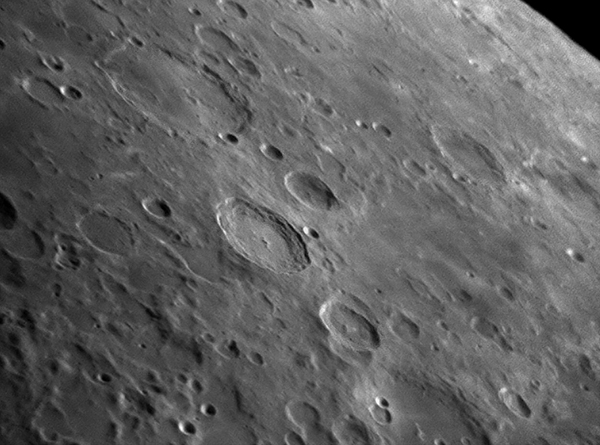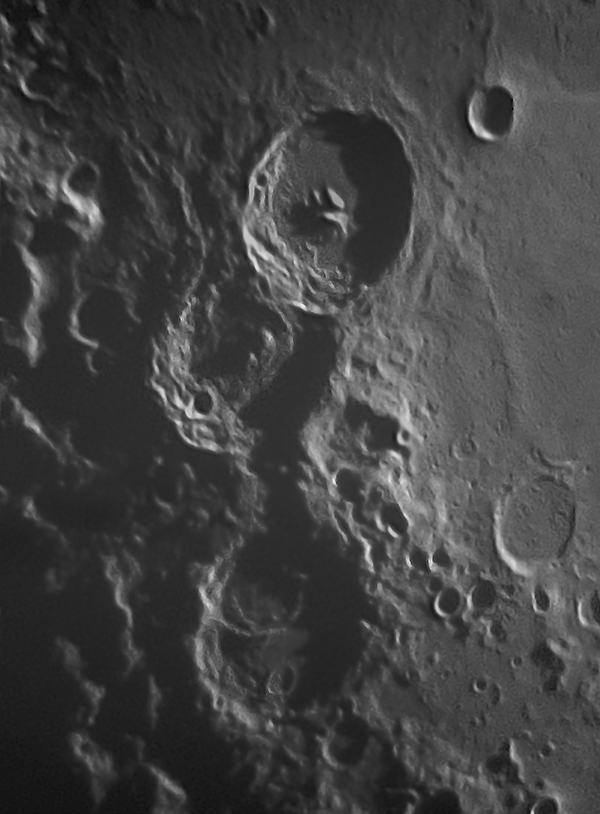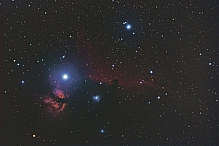Using some black plastic sheet, some Meccano fasteners, some Superglue, some sticky-tape, a Cornflakes box, a cardboard tube and a pair of Val's old knickers, I constructed a safe solar filter using the some of the Baader AstroSolar Safety Film that I got for my birthday. It fits securely over the front of the C80 refractor:


OK, so I lied about the box, the cardboard tube and the knickers, it turned out that I didn't really need them 
Anyway, it needed testing properly so I nipped up to the obsy and grabbed some .avi footage of Active Region 1089, where there is an impressive array of sunspots. After processing in K3CCDTools3, Registax and PSCS3, I've ended up with the following two images which are essentially the same except for the application of a little equalization in the second image:

Sunspots in AR1089 (21/07/2010).
100/1000 stacked frames.
DMK mono CCD camera on the C80ED-R.

As previous but equalized in PSCS3
I'll try to get more footage of this thing over the next few days to see how it changes. I'll probably use a bit of the leftover solar film to make filters for the D50's lenses, and then get some full-disc shots.
BE WARNED: Never view the Sun without a suitable Solar Filter! Solar observing is dangerous and can be hazardous to eyesight and equipment. Don't moan at me when you've burned holes in your retinas, set fire to your person/possessions and/or fried the chip in your camera. Proper solar-observing kit comes with serious safety advice - ignore it at your own peril!



